
|
|
Font Size:
|
||||
|
|
|
|
||||
STATISTICAL BRIEF #200:
Comparing Population Characteristics of Persons Purchasing Prescribed Drugs from Mail Order Pharmacies with Persons Purchasing Prescribed Drugs from Other Outlets, 2005
Highlights
- Comparing 2000 with 2005, for persons with a prescribed drug purchase, the proportion of persons buying at least one drug by mail order increased (from 8.8 to 13.2 percent) while the proportion of persons buying at least one drug at a drug store; an HMO, clinic, or hospital; and in another store all decreased (65.1 to 60.9 percent; 15.2 to 12.9 percent; and 31.6 to 28.2 percent, respectively).
- During 2005, among persons with a prescribed drug purchase by mail order, the representation of people over age 65 (37.1 percent) was higher relative to persons purchasing at least one drug from a drug store (17.2 percent); an HMO, clinic or hospital (20.6 percent); and another store (20.8 percent).
- Of persons with at least one prescribed drug purchase by mail order in 2005, white, non-Hispanics accounted for a larger proportion (87.6 percent) relative to persons buying at least one drug from a drug store (72.8 percent); an HMO, clinic, or hospital (61.2 percent); and another store (80.2 percent).
- In 2005, of those with a prescribed drug purchase by mail order, persons with private insurance accounted for a higher representation (86.6 percent) compared with individuals purchasing at least one prescribed medicine from a drug store (72.4 percent); an HMO, clinic, or hospital (64.6 percent); and another store (76.1 percent).
- During 2005, of the population with a prescribed drug purchase by mail order, there was a higher representation of persons reporting at least one chronic condition (74.7 percent) relative to persons buying at least one drug from a drug store (50.7 percent); an HMO, clinic, or hospital (55.5 percent); and another store (53.2 percent).
Introduction
This Statistical Brief provides information as reported by households in the U.S. civilian noninstitutionalized (community) population for calendar years 2000 and 2005 on the proportion of persons who purchased at least one prescribed medicine at the following types of pharmacies: mail order; drug store; HMO, clinic, or hospital; and another store (e.g., grocery store, etc.). This brief also compares person characteristics of those persons with a prescribed medicine expense purchasing at least one drug from a mail order pharmacy with the person characteristics of those purchasing at least one drug from a drug store; an HMO, clinic, or hospital; and another store in calendar year 2005.
The estimates in this brief are derived from the Household Component of the 2000 and the 2005 Medical Expenditure Panel Survey (MEPS-HC). Only prescribed medicines purchases in an outpatient setting are included in the estimates. Insulin and diabetic supplies and equipment are included in MEPS prescribed medicines estimates. Over-the-counter medicines are excluded from these estimates as are prescription medicines administered in an inpatient setting or in a clinic or physician's office. All differences discussed in the text are statistically significant at the 0.05 percent level.
The pharmacy type variable in the MEPS-HC is a person-level variable and is linked to a person and is not linked to prescribed medicine purchases. There is no limit on the number of pharmacies a person can report in the MEPS-HC.
Findings
In 2000, there were 173.3 million persons in the U.S. civilian noninstitutionalized population that purchased prescribed drugs, and in 2005, there were 187.0 million persons in the U.S. civilian noninstitutionalized population that purchased prescribed drugs. Comparing 2000 to 2005 for those persons with a prescribed drug purchase, the proportion of persons buying at least one drug from a mail order pharmacy increased from 8.8 percent to 13.2 percent, while the proportion of persons purchasing at least one drug from a drug store; an HMO, clinic, or hospital; and another store (e.g., grocery stores, etc.) all decreased (65.1 percent to 60.9 percent; 15.2 percent to 12.9 percent; and 31.6 percent to 28.2 percent, respectively) (figure 1).
In 2005, of those with at least one prescribed drug purchase by mail order, there was a lower representation of persons under age 65 (62.9 percent) relative to persons with at least one drug purchase from a drug store (82.8 percent); an HMO, clinic or hospital (79.4 percent); and another store (79.3 percent). In comparison, of those with at least one prescribed drug purchase by mail order, there was a higher representation of persons age 65 and older (37.1 percent) relative to persons buying at least one drug from a drug store (17.2 percent); an HMO, clinic, or hospital (20.6 percent); and another store (20.8 percent) (figure 2).
Of those with at least one prescribed drug purchase by mail order in 2005, white, non-Hispanics had a higher representation (87.6 percent) relative to persons purchasing at least one drug from a drug store (72.8 percent); an HMO, clinic, or hospital (61.2 percent); and another store (80.2 percent). Moreover, among persons with a drug purchase by mail order, black, non-Hispanics and Hispanics had a lower representation (4.8 percent and 3.9 percent, respectively) relative to persons with a drug purchase at a drug store (11.4 percent and 10.9 percent); an HMO, clinic, or hospital (12.8 percent and 15.1 percent); and other store (6.7 percent and 8.3 percent) (figure 3).
During 2005, the population with at least one prescribed drug purchase by mail order had a higher representation of males (43.7 percent) compared with persons buying at least one drug from another store (40.8 percent) but accounted for a lower representation relative to persons buying at least one drug from an HMO, clinic, or hospital (47.3 percent). In comparison, of the population with a prescribed drug purchase by mail order in 2005, females accounted for a higher representation (56.3 percent) relative to the population buying at least one drug from an HMO, clinic, or hospital (52.7 percent) but accounted for a lower representation relative to the population buying at least one drug from another store (59.2 percent) (figure 4).
Of those with at least one prescribed drug purchase by mail order in 2005, persons with any private insurance accounted for a higher representation (86.6 percent) relative to those persons buying at least one drug from a drug store (72.4 percent); an HMO, clinic or hospital (64.6 percent); and another store (76.1 percent). In comparison, of those with at least one prescribed drug purchase by mail order in 2005, persons with public insurance only and the uninsured accounted for lower representations (10.6 percent and 2.8 percent, respectively) compared with the population buying at least one drug from a drug store (21.1 percent and 6.6 percent, respectively); an HMO, clinic, or hospital (23.4 percent and 12.0 percent, respectively); and another store (17.8 percent and 6.0 percent, respectively) (figure 5).
In 2005, of those with at least one prescribed drug purchase by mail order, those with middle and high incomes accounted for a higher representation (82.9 percent) relative to persons purchasing at least one drug from a drug store (70.3 percent); an HMO, clinic, or hospital (65.0 percent); and another store (73.7 percent). Moreover, of those with a prescribed drug purchase in 2005 by mail order, those that were poor, and those that were near poor or had low income accounted for smaller representations (5.4 percent and 11.8 percent, respectively) compared with the populations buying at least one drug from a drug store (12.6 percent and 17.1 percent, respectively); an HMO, clinic, or hospital (14.1 percent and 21.0 percent); and another store (9.4 percent and 16.9 percent, respectively) (figure 6).
Among those persons with at least one mail order prescribed medicine purchase in 2005, there was a higher representation of people in excellent, very good, or good health (82.6 percent) and a lower representation of persons in fair or poor heath (17.4 percent) relative to those buying at least one drug from an HMO, clinic, or hospital (79.4 percent and 20.6 percent, respectively) (figure 7).
During 2005, of those with at least one prescribed drug purchase by mail order, the proportion reporting having at least one chronic condition was higher (74.7 percent) relative to persons with at least one drug purchase from a drug store (50.7 percent); an HMO, clinic, or hospital (55.5 percent); and another store (53.2 percent) (figure 8).
Data Source
The estimates in this Statistical Brief were derived from the MEPS HC-050: 2000 Full Year Consolidated Data File; HC-097: 2005 Full Year Consolidated Data File; HC-051A: 2000 Prescribed Medicines File; and HC-094A: 2005 Prescribed Medicines File.
Definitions/Methodology
Type of pharmacy
The pharmacy type variable in the MEPS-HC is a person-level variable and is linked to a person and is not linked to prescribed drug purchases. There is no limit on the number of pharmacies a person can report in the MEPS-HC.
Age
Age is the last available age for the sampled person. For most persons, this was their age at the end of the year.
Racial and ethnic classifications
Classification by race and ethnicity was based on information reported for each family member. Respondents were asked if each family member's race was best described as American Indian, Alaska Native, Asian or Pacific Islander, black, white, or other. They also were asked if each family member's main national origin or ancestry was Puerto Rican; Cuban; Mexican, Mexicano, Mexican American, or Chicano; other Latin American; or other Spanish. All persons whose main national origin or ancestry was reported in one of these Hispanic groups, regardless of racial background, were classified as Hispanic. Since the Hispanic grouping can include black Hispanic, white Hispanic, Asian and Pacific Islanders Hispanic, and other Hispanic, the race categories of black, white, Asian and Pacific Islanders, and other do not include Hispanic. Beginning in 2002, MEPS respondents were allowed to report multiple races, and these persons were included in the other non-Hispanic category. As a result, there was a slight increase in the percentage of persons classified in this category in 2002 compared with prior years.
Health insurance status
- Any private health insurance: Individuals with insurance that provides coverage for hospital and physician care at any time during the year, other than Medicare, Medicaid, or other public hospital/physician coverage, are classified as having private insurance. Medigap coverage is included in this category. Persons with TRICARE are also included. Insurance that provides coverage for a single service only, such as dental or vision, is not included.
- Public coverage only: Individuals are considered to have public coverage only if they met both of the following criteria: 1) They were not covered by private insurance at any time during the year; 2) They were covered by one of the following public programs at any point during the year: Medicare, Medicaid, or other public hospital/physician coverage.
- Uninsured: The uninsured are defined as persons not covered by Medicare, TRICARE, Medicaid, other public hospital/physician programs, or private hospital/physician insurance at any time during 2005. Individuals covered only by noncomprehensive State-specific programs (e.g., Maryland Kidney Disease Program, Colorado Child Health Plan) or private single-service plans (e.g., coverage for dental or vision care only, coverage for accidents or specific diseases) are not considered to be insured.
Each year, persons were classified according to their family's income in terms of poverty status. In this report, poverty status is the ratio of the family's income to the Federal poverty thresholds, which control for the size of the family and the age of the head of the family. The following classification of poverty status was used:
- Poor: Persons in families with income less than 100 percent of the poverty line, including those who reported negative income.
- Near poor/low income: Persons in families with income of 100 percent of the poverty line through 200 percent of the poverty line.
- Middle income/high income: Persons in families with income over 200 percent of the poverty line.
During each round of interviewing, the household respondent was asked to rate the health of each person in the family according to the following categories: excellent, very good, good, fair, or poor. For this report, the response categories "excellent," "very good," and "good" were collapsed, as were "fair" and "poor."
Chronic condition indicator
The indicator for chronic conditions was drawn from variables indicating presence of the following chronic conditions: arthritis, active asthma, diabetes, emphysema, high blood pressure, ischemic heart disease (coronary heart disease, angina, heart attack, or any other heart related disease), and stroke. For each of the conditions listed, the following question was asked: "(Have/Has) PERSON ever been told by a doctor or other health professional that PERSON had [condition]." For asthma, those with an affirmative answer were further asked: "(Do/Does) (PERSON) still have asthma?" In this Statistical Brief, only those with active asthma (those who answered affirmatively to the follow-up question) are included among those with chronic conditions.
About MEPS-HC
MEPS-HC is a nationally representative longitudinal survey that collects detailed information on health care utilization and expenditures, health insurance, and health status, as well as a wide variety of social, demographic, and economic characteristics for the civilian noninstitutionalized population. It is cosponsored by the Agency for Healthcare Research and Quality and the National Center for Health Statistics.
For more information about MEPS, call the MEPS information coordinator at AHRQ (301-427-1656) or visit the MEPS Web site at http://www.meps.ahrq.gov/.
References
For a detailed description of the MEPS-HC survey and sample design, and methods used to minimize sources on nonsampling error, see the following publications:
Cohen J. Design and Methods of the Medical Expenditure Panel Survey Household Component. MEPS Methodology Report No. 1. AHCPR Pub. No. 97-0026. Rockville, MD: Agency for Healthcare Policy and Research, 1997. http://www.meps.ahrq.gov/mepsweb/data_files/publications/mr1/mr1.shtml
Cohen S. Sample Design of the 1996 Medical Expenditure Panel Survey Household Component. MEPS Methodology Report No. 2. AHCPR Pub. No. 97-0027. Rockville, MD: Agency for Healthcare Policy and Research, 1997. http://www.meps.ahrq.gov/mepsweb/data_files/publications/mr2/mr2.shtml
Cohen, S. Design Strategies and Innovations in the Medical Expenditure Panel Survey. Medical Care, July 2003: 41(7) Supplement: III-5-III-12.
Suggested Citation
Stagnitti, M. N. Comparing Population Characteristics of Persons Purchasing Prescribed Drugs from Mail Order Pharmacies with Persons Purchasing Prescribed Drugs from Other Outlets, 2005. Statistical Brief #200. February 2008. Agency for Healthcare Research and Quality, Rockville, MD. http://www.meps.ahrq.gov/mepsweb/data_files/publications/st200/stat200.pdf
AHRQ welcomes questions and comments from readers of this publication who are interested in obtaining more information about access, cost, use, financing, and quality of health care in the United States. We also invite you to tell us how you are using this Statistical Brief and other MEPS data and tools and to share suggestions on how MEPS products might be enhanced to further meet your needs. Please e-mail us at mepspd@ahrq.gov or send a letter to the address below:
Steven B. Cohen, PhD,
Director
Center for Financing, Access, and Cost Trends
Agency for Healthcare Research and Quality
540 Gaither Road
Rockville, MD 20850
 |
|||||||||||||||||||||||||||||||||||
|
|||||||||||||||||||||||||||||||||||
|
|
|||||||||||||||||||||||||||||||||||
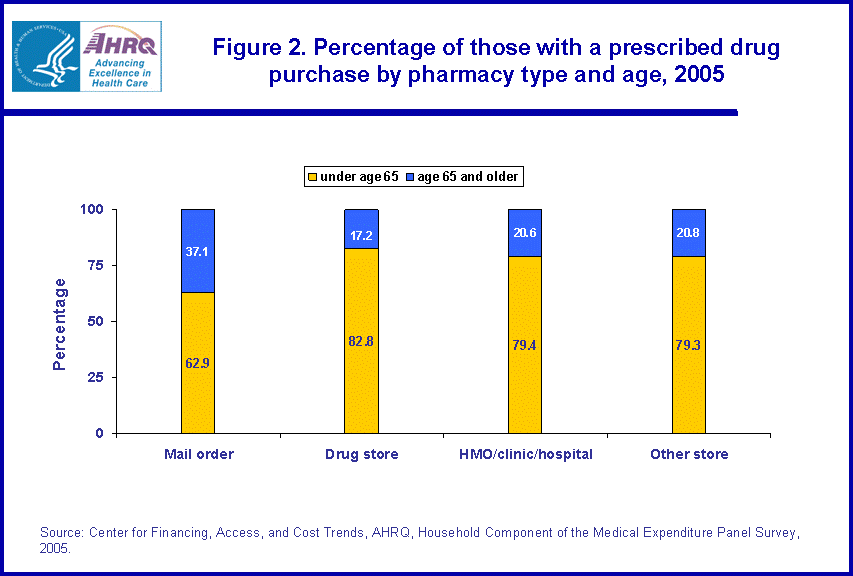 |
|||||||||||||||||||||||||||||||||||
|
|||||||||||||||||||||||||||||||||||
|
|
|||||||||||||||||||||||||||||||||||
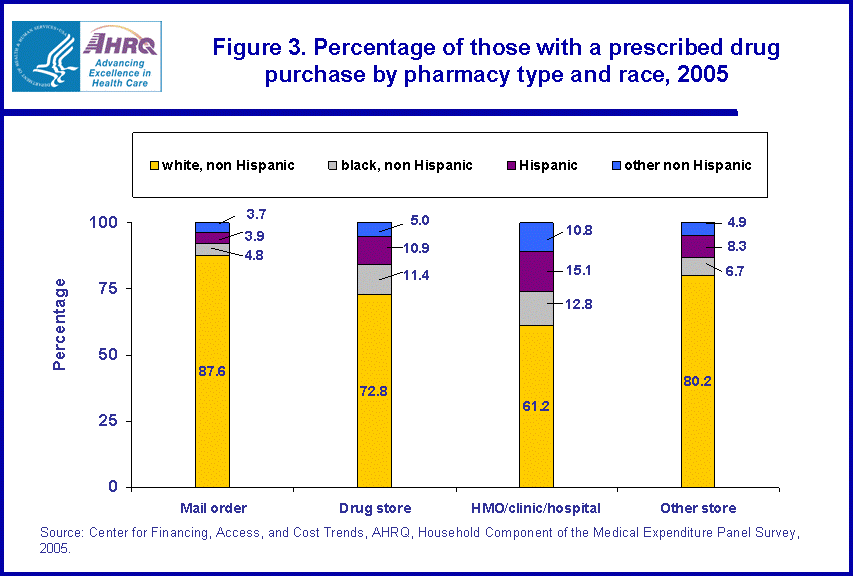 |
|||||||||||||||||||||||||||||||||||
|
|||||||||||||||||||||||||||||||||||
|
|
|||||||||||||||||||||||||||||||||||
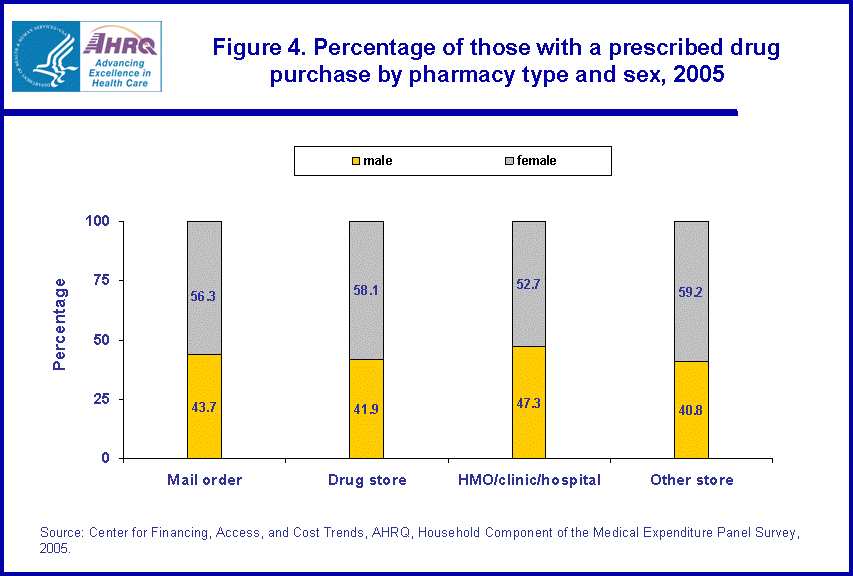 |
|||||||||||||||||||||||||||||||||||
|
|||||||||||||||||||||||||||||||||||
|
|
|||||||||||||||||||||||||||||||||||
 |
|||||||||||||||||||||||||||||||||||
|
|||||||||||||||||||||||||||||||||||
|
|
|||||||||||||||||||||||||||||||||||
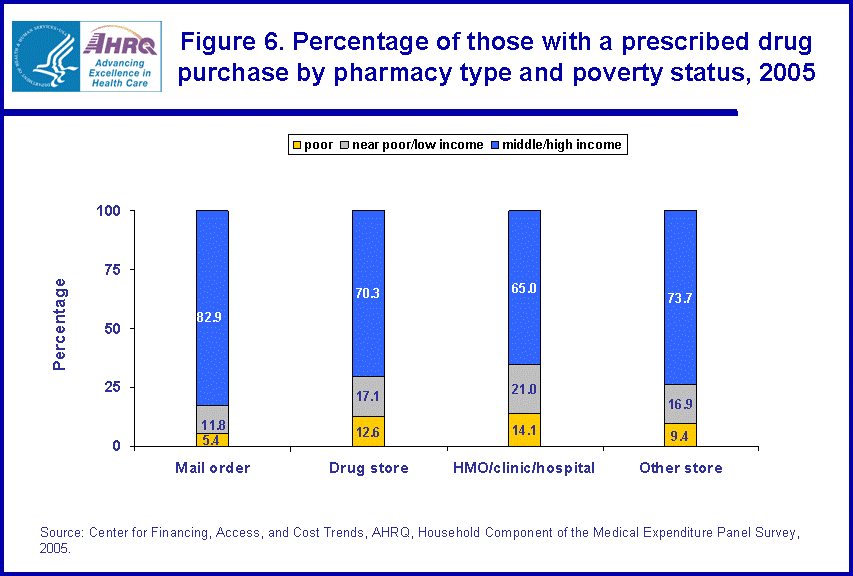 |
|||||||||||||||||||||||||||||||||||
|
|||||||||||||||||||||||||||||||||||
|
|
|||||||||||||||||||||||||||||||||||
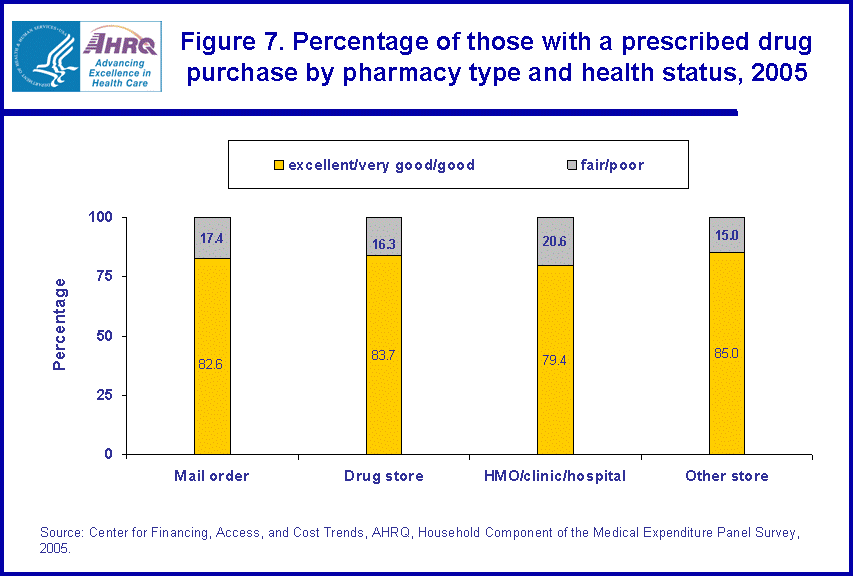 |
|||||||||||||||||||||||||||||||||||
|
|||||||||||||||||||||||||||||||||||
|
|
|||||||||||||||||||||||||||||||||||
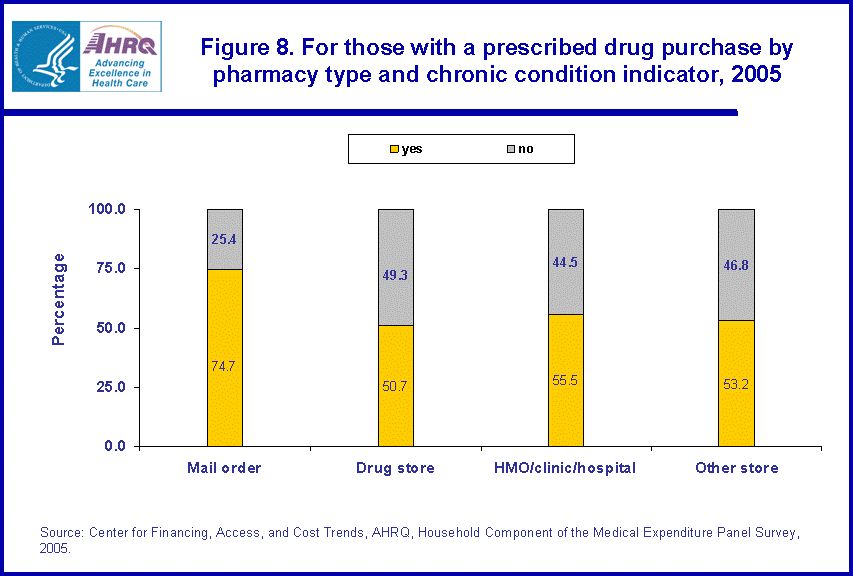 |
|||||||||||||||||||||||||||||||||||
|
|||||||||||||||||||||||||||||||||||
|
|
|||||||||||||||||||||||||||||||||||


